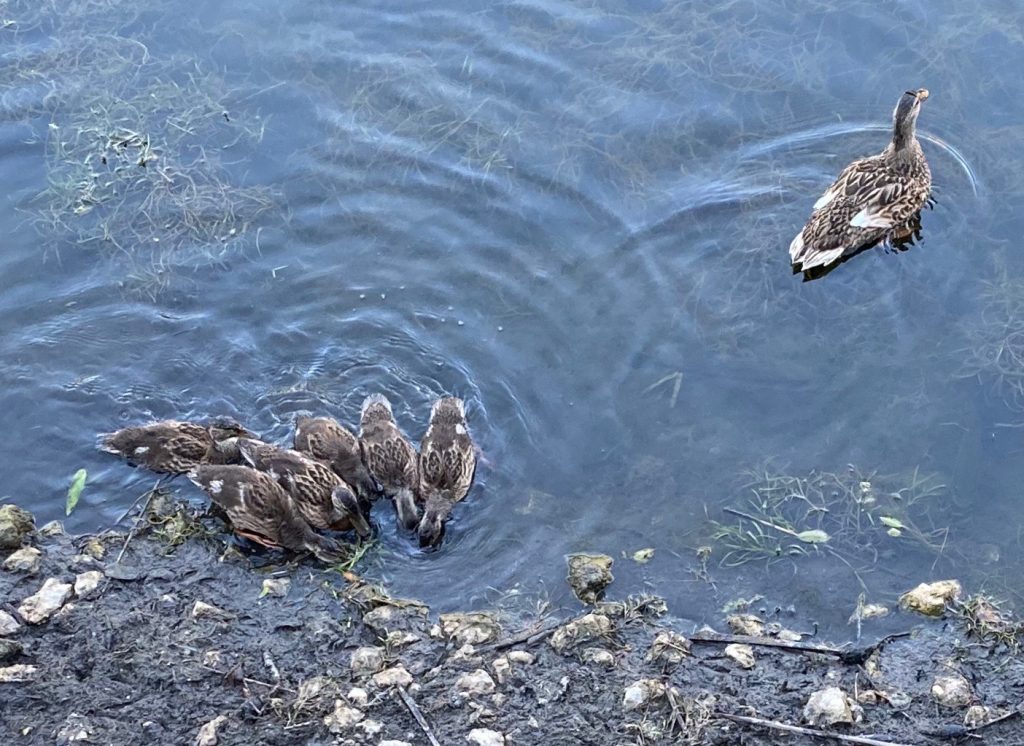
By Elizabeth Dunlop Richter
Consider the goose. Dickens gave us a mouth-watering image of goose at the Cratchit’s Christmas dinner table in A Christmas Carol: “Bob said he didn’t believe there ever was such a goose cooked. Its tenderness and flavor, size and cheapness, were the themes of universal admiration.” The childhood rhymes of Mother Goose tales have long delighted us. And don’t we always hope to find the fabled goose that lays the golden eggs?
A Canada goose at Lincoln Park’s South Pond
When we consider the goose today, we are often more likely to think of the majestic V-formations of migrating Canada geese that populate Chicago’s November skies. It is these geese that we love to hate! The North American Breeding Bird Survey estimates that the total North American population in 2015 was between 4.2 million to over 5.6 million, a dramatic increase since their near extinction at the beginning of the 20th century. Careful breeding restored the species. Thanks to man-made bodies of water with ample grass in parks, golf courses and residential developments with no natural predators, Canada geese populations have exploded. And there’s nowhere better to see the phenomenon in action than at Lincoln Park’s South Pond in the spring.

Tiny fluffy yellow goslings are barely visible in the grass along the pond.
To some, the proliferation of geese is not a welcome development. Geese can be noisy, aggressive if a nest or goslings are nearby, and leave their messy droppings in the most inconvenient places. Yet, the elegant birds are a wonderful reminder of the charms of nature in the city.
Canada geese are, not surprisingly, native to Canada, but inhabit a broad swath of the United States with a large population in the Great Lakes area. Historically, the geese have migrated from their northern Canada homes to as far south as Mexico in the winter. Today there are many populations that have settled permanently where conditions are attractive.
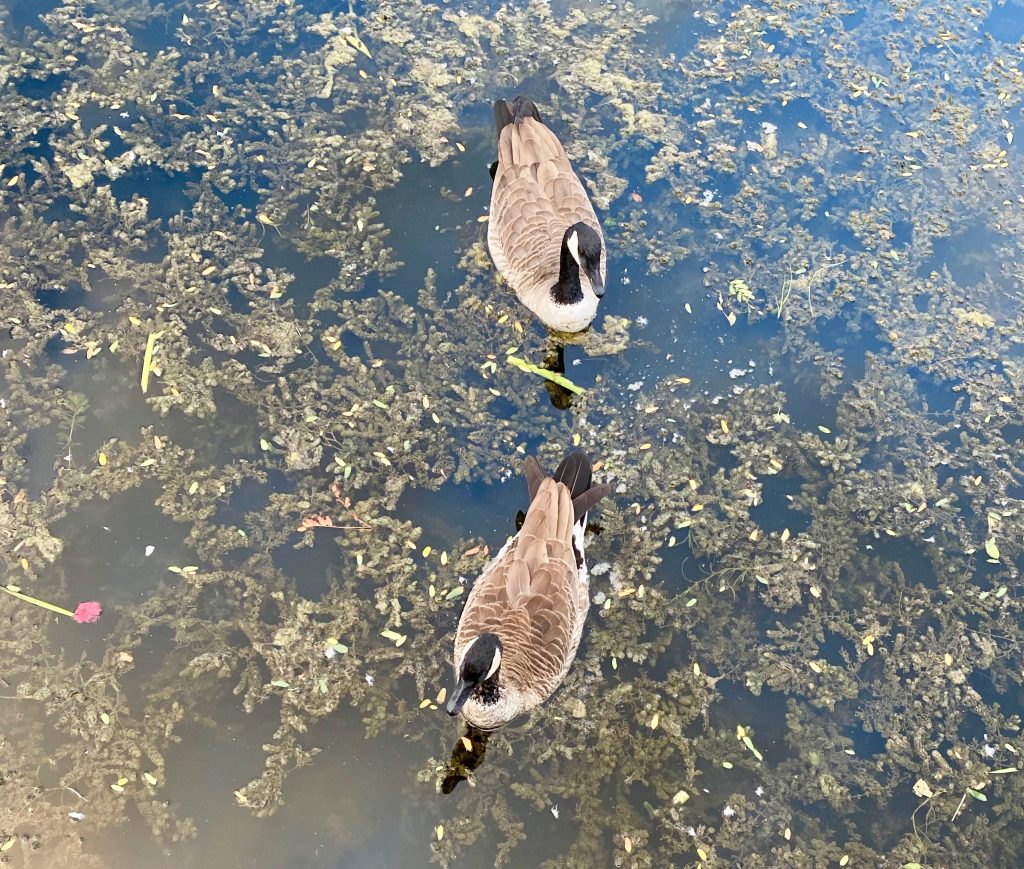
Illinois, in the middle of the Mississippi Migratory Flyway, had a goose population estimated in the spring of 2019 of 131,300. According to the Chicago Park District, Chicago is an ideal habitat for geese year-round, devoid of natural predators, offering a year-round food supply and providing attractive nesting sites. While Lincoln Park populations vary from season to season, a goodly number are permanently ensconced at the South Pond, even lining up along the ice on a snowy winter day.

Geese gather on the edge of the South Pond ice.
The South Pond offers a particularly attractive diet for the geese. They feed primarily on grasses, insects and small fish. They also delight in underwater plants, which they easily pull from the shallow pond by gliding their bills along the bottom. Visitors can see their white undersides when they dive for dinner.
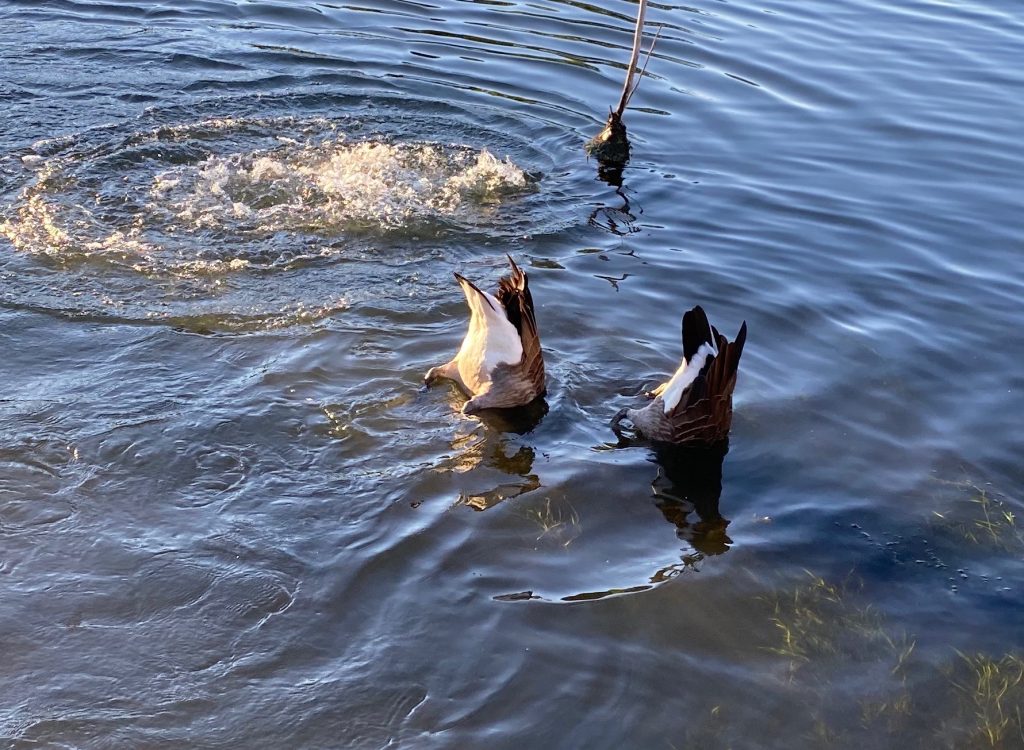
Diving for dinner at the bottom of the pond
Geese are monogamous and mate for life. Both father and mother are doting parents, carefully guarding nests that are created informally of goose down and matted grasses along the banks of the pond. Geese prefer to nest near water in short grass that doesn’t block their view of predators or other dangers.

This mother goose spreads her wings to cover her barely visible babies while she naps.
When the goslings break out of the shell, they are able to find their own food and swim almost immediately, but the ever-watchful mother goose will spread her wings to protect her little ones at rest. The proud parents are very protective. Redwing blackbirds, common at the South Pond, sometimes build nests in the grass near a goose nest. Father blackbirds have been spotted harassing the nearby geese. Geese parents are quick to respond. If threatened, they may hiss, flap their wings, and attack a perceived predator, whether an angry blackbird or an innocent strolling visitor.
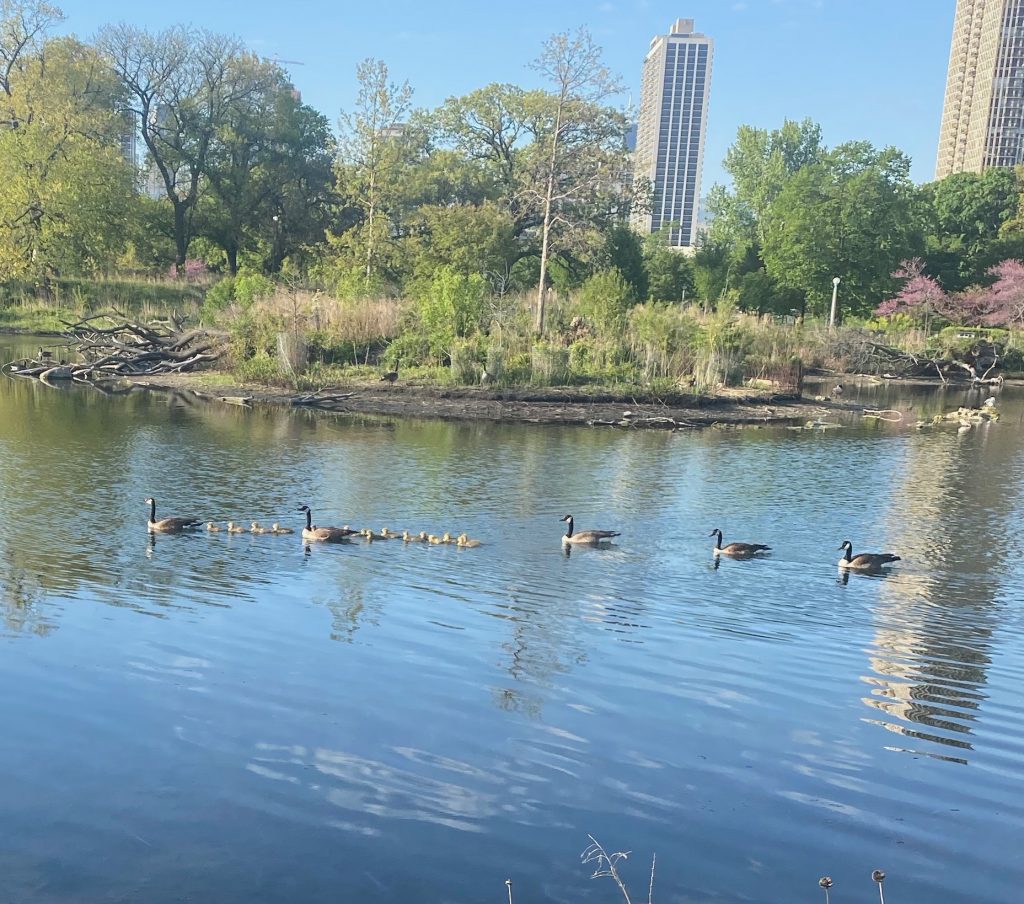
A gosling follows his father “and so do his sisters, and his cousins, and his aunts; his sisters and his cousins whom he reckons up by dozens, and his aunts” (with apologies to Gilbert and Sullivan).
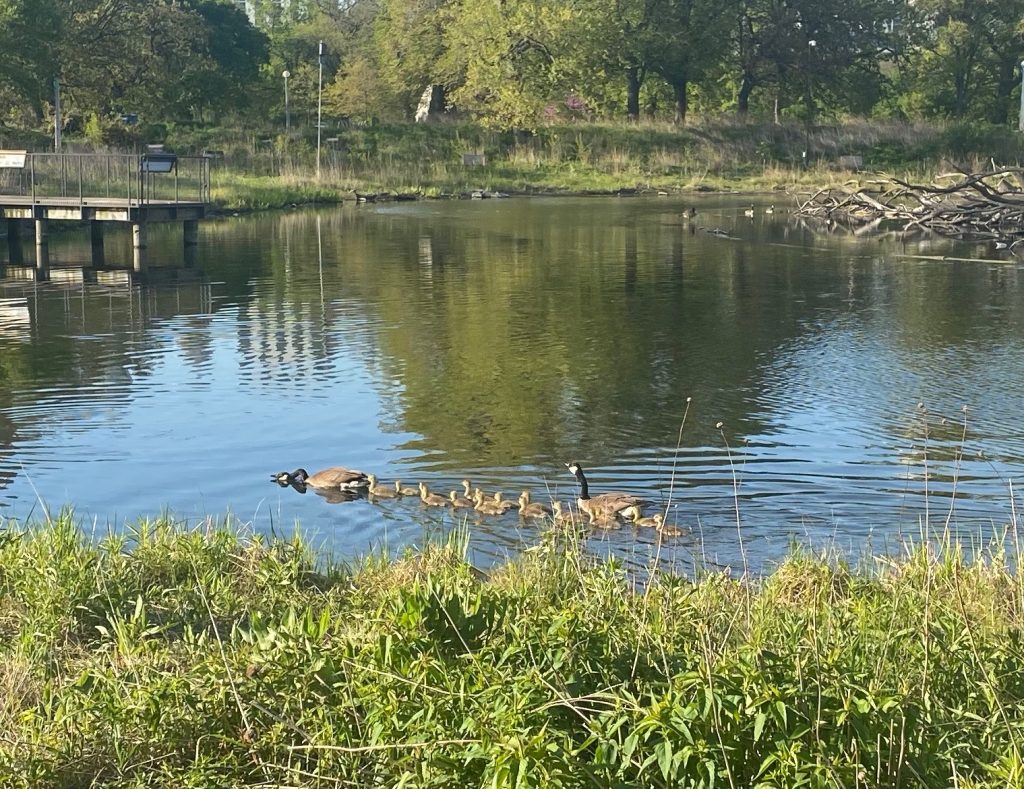
One of the most appealing sights for human visitors is a gaggle of geese slowly cruising the pond. Sometimes two broods join together, accompanied perhaps by aunts and uncles who help guide the goslings in a well-ordered line. The South Pond geese are used to human observers circumnavigating the boardwalk and don’t seem to mind photographers who find their parades irresistible.
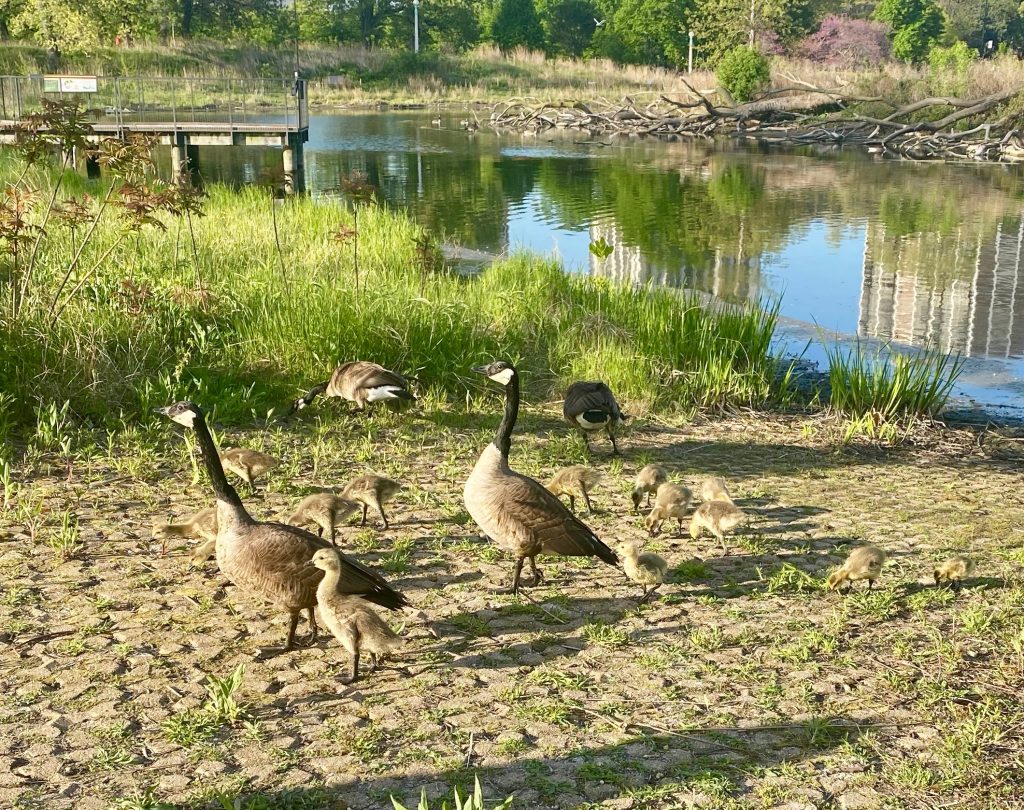
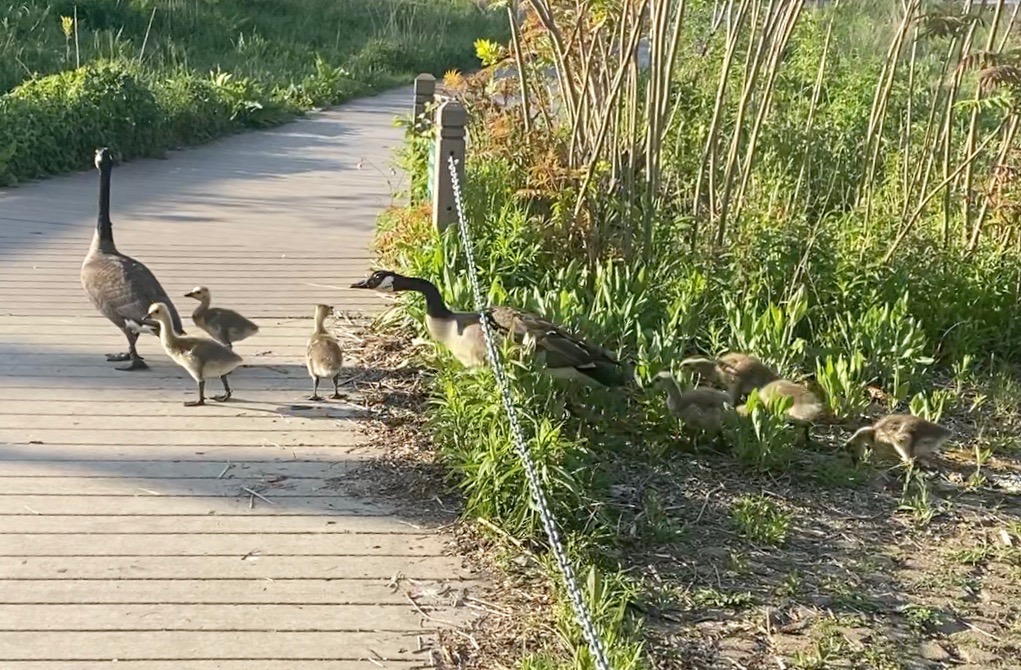
Undaunted by chains to keep people on the path, the goose family sets out to explore.
The South Pond is not the exclusive habitat for its geese families. As the goslings get older, at some point, some families may wander to another part of the pond or even head out to the lagoon in sight of Lake Shore drive.
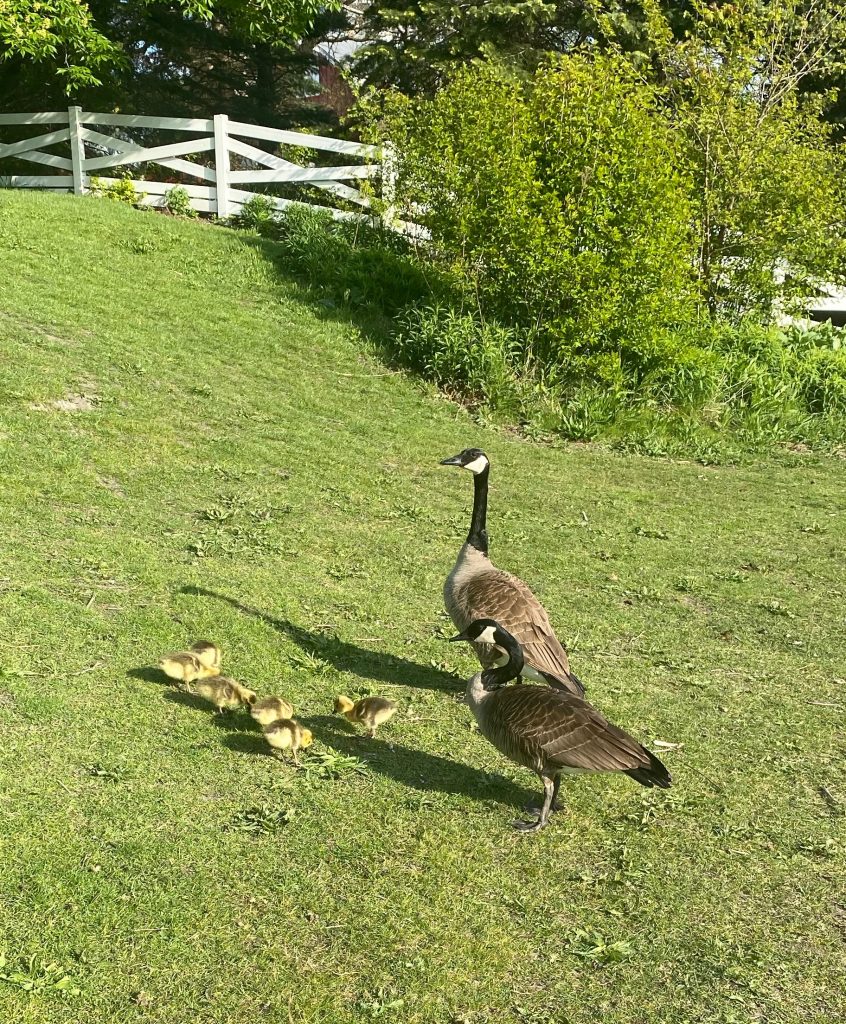

Open grassy fields like this area along the bike path between the zoo and the lagoon are favorite goose dining areas.
Chances are these geese have chosen not to migrate, having found a pleasant temperate climate with an ample food supply. But explore they do, like this family heading through the tunnel under the statue of General Grant.

No licenses for hunting geese are granted in the city, so there are no recipes for roast goose in this story. There are no nursery rhymes to recite and to date, no golden eggs have been found; but we can enjoy the beauty of these creatures, their handsome coloring, and their adorable goslings.


The South Pond will continue to nurture not only geese, but also ducks, frogs, turtles, herons, and many other species that have learned to live in peace with those of us who treasure their wildness and are thankful for their choosing to live near us in the city.
